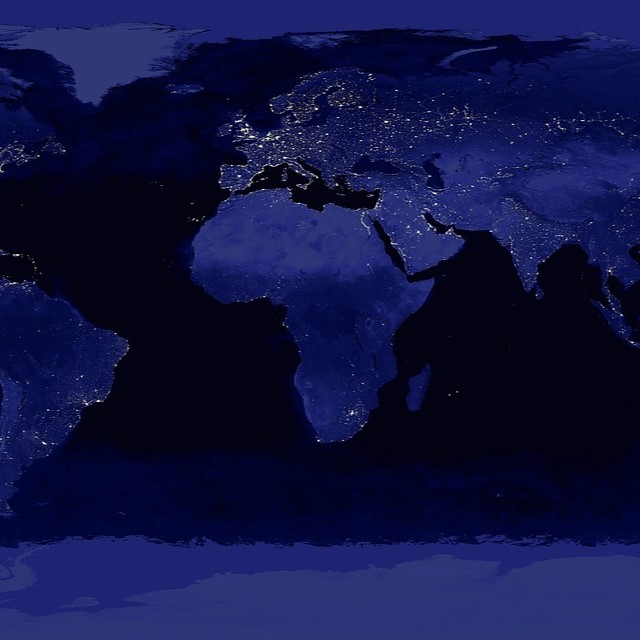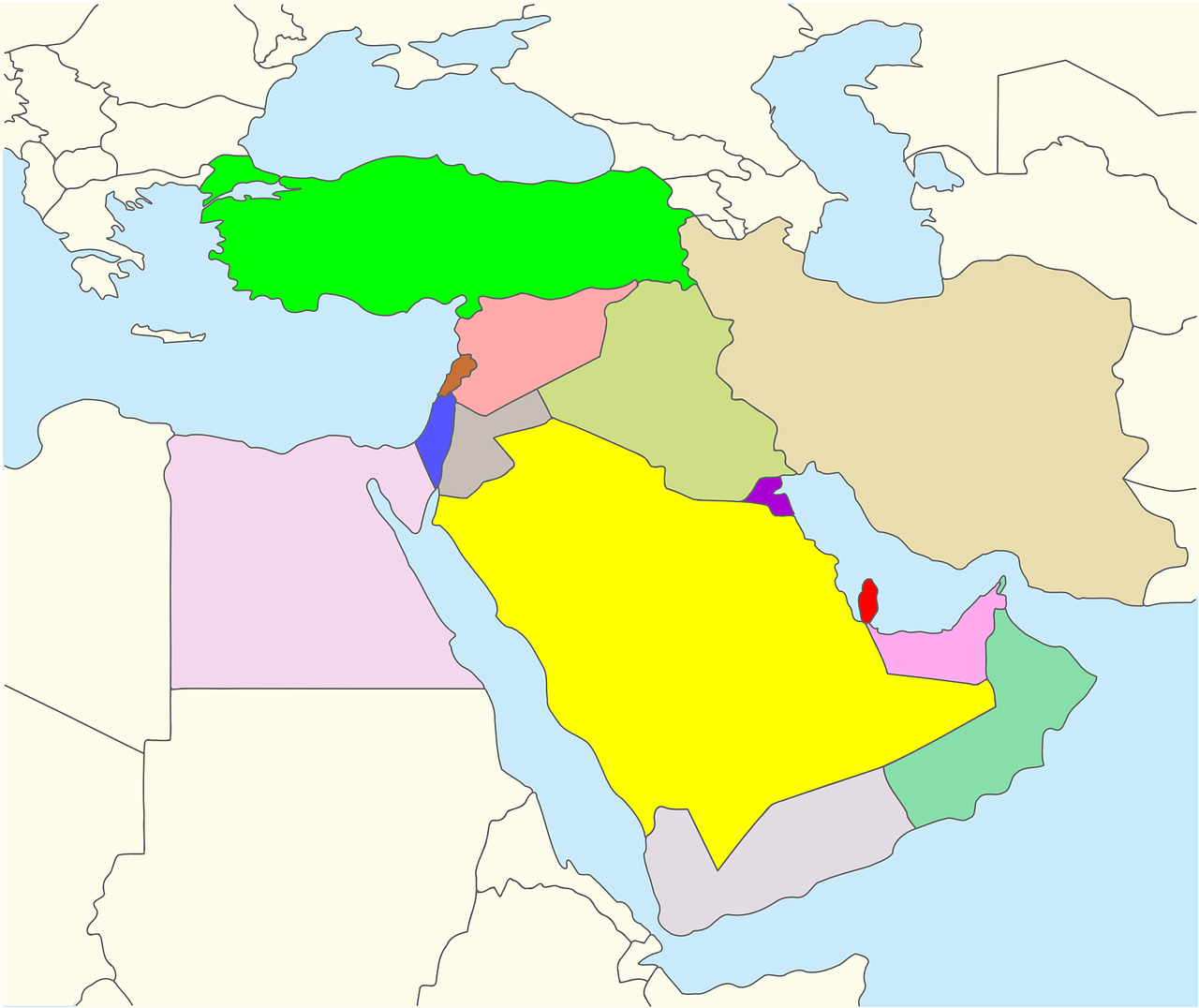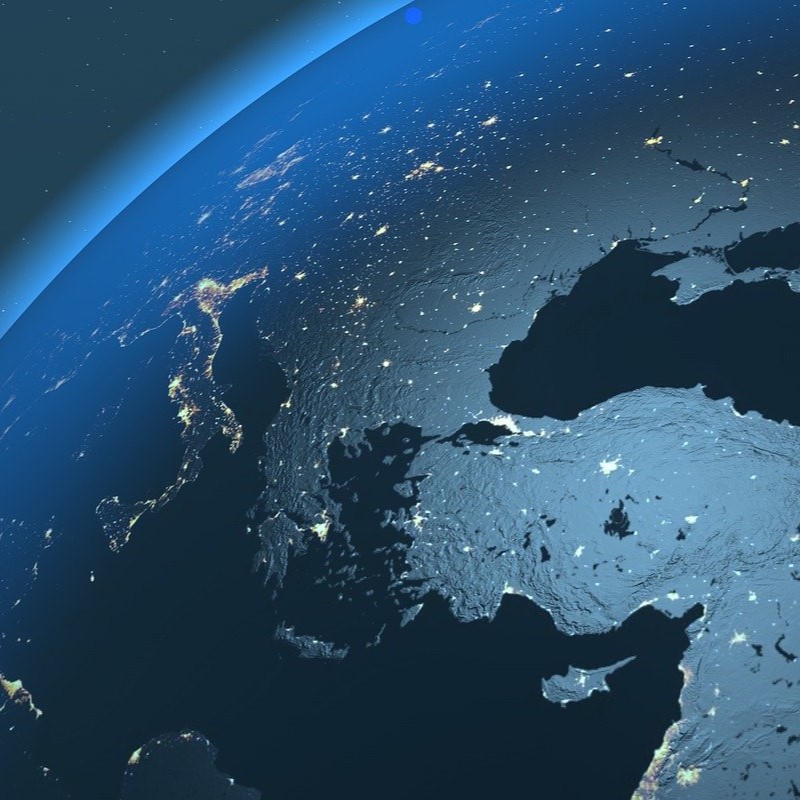The geopolitics and diplomacy of the Syrian liberation , the Global and Middle East perspective.
By Godson Azu.The geopolitics and diplomacy of the Syrian liberation involve a complex interplay of local, regional, and global dynamics shaped by the Syrian Civil War. This multifaceted conflict has resulted in shifting alliances, competing interests, and efforts at liberation or control by various actors. Below is a detailed analysis: 1. Local Dynamics • Opposition Movements: Syrian liberation efforts initially emerged from grassroots uprisings against President Bashar al-Assad’s government, motivated by demands for democracy, human rights, and economic reform. These movements splintered into various factions, including the Free Syrian Army (FSA) and later Islamist groups like Hay’at Tahrir al-Sham (HTS). • Kurdish Forces: Kurdish groups, particularly the Syrian Democratic Forces (SDF), sought liberation in the form of autonomy or self-governance, complicating national liberation dynamics. • Government’s Response: The Assad regime, backed by significant international support, framed opposition forces as terrorists and launched brutal military campaigns to regain control. 2. Regional Players • Iran: A staunch supporter of Assad, Iran views Syria as a strategic ally and a key part of its “axis of resistance” against Western and Gulf influence. Iran has provided military advisors, funding, and support to proxy militias like Hezbollah. • Turkey: Turkey’s involvement focuses on curbing Kurdish aspirations for autonomy, which Ankara views as a threat to its territorial integrity. It has supported opposition factions while conducting military incursions into northern Syria. • Saudi Arabia and the Gulf States: Initially, these countries backed opposition forces to counter Iranian influence, framing Syrian liberation as part of a broader Sunni-Shia rivalry. • Israel: While not directly involved in the liberation narrative, Israel has conducted airstrikes against Iranian and Hezbollah positions in Syria to limit their foothold. 3. Global Powers • Russia: A critical ally of Assad, Russia’s military intervention in 2015 turned the tide of the war. Russia frames its involvement as fighting terrorism while protecting its regional interests, including a naval base at Tartus. • United States: U.S. policy has focused on combating ISIS and supporting Kurdish forces while promoting a political resolution that might include Assad’s removal. However, U.S. efforts for liberation have been inconsistent, prioritizing counterterrorism over regime change. • European Union: The EU has largely played a humanitarian role, advocating for refugee protection and funding aid programs. European nations have also imposed sanctions on the Assad regime. • China: While less directly involved, China supports Assad diplomatically, opposing Western-led interventions and promoting Syrian sovereignty. 4. Competing Visions of Liberation • Opposition’s Vision: Liberation as a transition to democracy and the end of Assad’s authoritarian rule. • Kurdish Vision: Liberation through autonomy and self-determination. • Assad’s Narrative: Liberation as reclaiming territory from “terrorists” and restoring state sovereignty. • External Actors: Regional and global powers often frame their involvement as contributing to liberation but are primarily driven by their strategic interests.
A Middle Eastern Perspective The Syrian conflict, which erupted in 2011 during the Arab Spring, has become a complex geopolitical struggle involving regional and global powers. The path to Syria’s liberation and reconstruction is fraught with competing interests, historical rivalries, and ideological divisions that shape Middle Eastern perspectives on the crisis. Regional Dynamics 1. Iran and Hezbollah Iran views Syria as a critical link in its “Shia Crescent,” connecting Tehran to Hezbollah in Lebanon. It has provided military and financial support to the Assad regime to preserve its regional influence. Hezbollah, Iran’s key ally, has fought alongside Assad’s forces to secure its strategic depth. 2. Turkey Turkey initially supported the Syrian opposition, viewing Assad’s fall as an opportunity to shape a post-conflict order aligned with its Sunni Islamist allies. However, Ankara’s primary focus has shifted to countering the rise of Kurdish forces (YPG/SDF) in northern Syria, which it perceives as a threat to its national security. Turkey’s interventions aim to establish buffer zones and prevent Kurdish autonomy. 3. Gulf States Saudi Arabia, Qatar, and the UAE have backed various opposition groups to counter Iranian influence. While Qatar supported Islamist factions, Saudi Arabia and the UAE favored more secular opposition groups. However, Gulf enthusiasm has waned due to the opposition’s fragmentation and battlefield setbacks. 4. Israel Israel remains focused on preventing Iran’s entrenchment in Syria. Frequent Israeli airstrikes target Iranian and Hezbollah positions, reflecting its strategy of “mowing the grass” to mitigate long-term threats without direct involvement in regime change. Challenges to Liberation 1. Sectarian Divisions: The conflict has deepened sectarian divides across the region, with Sunni-majority states opposing the Shia-aligned Assad regime. This sectarianism complicates consensus on Syria’s future. 2. Proxy Wars: The Syrian crisis has become a battleground for regional power struggles, with Iran, Turkey, and the Gulf states backing rival factions, further fragmenting the opposition. 3. Kurdish Autonomy: The Kurds’ quest for self-rule adds another layer of complexity, pitting them against Turkey and Arab factions while receiving conditional support from the U.S. Diplomatic Efforts Astana Process Russia, Turkey, and Iran spearhead the Astana talks, focusing on de-escalation zones and a political solution. However, these efforts often prioritize the sponsors’ interests over a comprehensive settlement. Arab League After years of isolating Assad, Arab states are cautiously reengaging with Damascus, reflecting a pragmatic shift to counterbalance Iranian influence and address regional stability. United Nations The UN has pushed for a constitutional committee and a negotiated political solution under Resolution 2254. However, progress remains slow due to entrenched divisions and lack of consensus among key players. • UN-Led Peace Talks: Multiple rounds of UN-mediated talks, such as the Geneva Process, have sought a political solution, but these have largely failed due to disagreements over Assad’s role. • International Aid and Reconstruction: Diplomacy also involves negotiations over humanitarian aid access and the reconstruction of Syria, which is contingent on political resolutions and international recognition
Path Forward For the Middle East, Syria’s liberation hinges on reconciling competing interests. A sustainable resolution requires: • Inclusive Governance: Accommodating Syria’s diverse ethnic and sectarian groups. • Regional Cooperation: Bridging divides between Iran, Turkey, and the Gulf states to reduce proxy conflicts. • Reconstruction and Refugees: Securing international support for rebuilding Syria and addressing the displacement crisis. The role of key actors in the Syrian conflict and the hypothetical sudden fall of the Assad government would significantly reshape the geopolitical and diplomatic landscape. Below is a detailed analysis of the role of these actors and the potential consequences of such an event: 1. Key Actors in the Syrian Conflict A. The Assad Regime • Current Role: Assad’s government has maintained control over significant parts of Syria with the help of allies like Russia and Iran. The regime’s survival depends on a combination of military strength, foreign backing, and its ability to exploit divisions among opposition groups. • Impact of Assad’s Fall: • Likely power vacuum, leading to intensified conflict among opposition factions and regional players. • Challenges for state institutions, which have been weakened after over a decade of war. B. Opposition Groups • Current Role: The opposition is fragmented, ranging from moderate groups like the Free Syrian Army (FSA) to Islamist factions like Hay’at Tahrir al-Sham (HTS). • Impact of Assad’s Fall: • These groups might vie for control, leading to a chaotic struggle for dominance. • The lack of unity and international support would hinder their ability to establish a stable government. C. Kurdish Forces (Syrian Democratic Forces, SDF) • Current Role: Controlling northeastern Syria, the Kurds aim for autonomy rather than central control. • Impact of Assad’s Fall: • The Kurds might push for greater autonomy or independence, intensifying tensions with Turkey and Arab factions. • Could position themselves as a stabilizing force if supported by external actors like the U.S. 2. Role of Regional Players A. Iran • Current Role: Iran is a key ally of Assad, providing military support through proxy forces like Hezbollah and other militias. • Impact of Assad’s Fall: • Loss of a critical ally in the region and a land corridor to Hezbollah in Lebanon. • Iran might double down on supporting Shia militias to retain influence, potentially escalating sectarian tensions. B. Turkey • Current Role: Turkey backs opposition forces and views Kurdish autonomy as a threat. • Impact of Assad’s Fall: • Turkey might intervene militarily to prevent Kurdish gains and secure influence in post-Assad Syria. • Could support Sunni Arab factions to establish a government aligned with Turkish interests. C. Gulf States (Saudi Arabia, UAE, Qatar) • Current Role: These states have supported opposition groups to counter Iranian influence. • Impact of Assad’s Fall: • Saudi Arabia and its allies might increase funding to factions opposed to Iranian-backed groups. • Competition between Gulf states over which factions to support could exacerbate divisions. D. Israel • Current Role: Focused on preventing Iranian entrenchment in Syria through airstrikes and intelligence operations. • Impact of Assad’s Fall: • Israel might face increased instability along its borders, especially if Iranian proxies expand their presence in the absence of a centralized Syrian government. • Could collaborate with other actors to contain Iranian influence. 3. Role of Global Powers A. Russia • Current Role: Russia is the Assad regime’s primary international backer, with military bases in Syria. • Impact of Assad’s Fall: • Russia would face a strategic setback, losing its foothold in the Middle East. • Could pivot to supporting alternative power centers (e.g., Kurdish groups or loyalist factions) to retain influence. B. United States • Current Role: Focused on combating ISIS and supporting Kurdish forces. • Impact of Assad’s Fall: • The U.S. might see an opportunity to shape Syria’s future but could struggle to balance support for Kurds and relations with Turkey. • Increased pressure to prevent extremist groups from exploiting the power vacuum. C. European Union • Current Role: Focused on humanitarian aid, refugee issues, and promoting a political solution. • Impact of Assad’s Fall: • Likely to play a larger role in stabilization and reconstruction efforts. • Concerns about a potential new wave of refugees and the resurgence of extremist groups. D. China • Current Role: Limited involvement, supporting Assad diplomatically and focusing on reconstruction opportunities. • Impact of Assad’s Fall: • China might step up economic engagement to rebuild Syria and expand its influence in the Middle East. 4. Consequences of Assad’s Sudden Fall A. Power Vacuum • Competing factions (opposition groups, Kurdish forces, Iranian proxies) would struggle for control. • Increased likelihood of Syria fragmenting into de facto zones of influence controlled by different actors. B. Humanitarian Crisis • Escalation in violence could worsen the already dire humanitarian situation. • Displacement of millions more, both internally and as refugees to neighboring countries. C. Extremist Resurgence • Groups like ISIS or HTS could exploit the chaos to regain territory and influence. • Threats to regional and international security. D. Regional Escalation • Turkey might intensify military actions in northern Syria. • Iran and its proxies could clash with Sunni factions and Israeli forces. E. Diplomatic Shifts • Efforts to establish a new government would require unprecedented coordination among local, regional, and global actors. • The UN and international community would need to balance competing interests to prevent further fragmentation. 5. Pathways to Stability • Inclusive Political Process: Establishing a transitional government that includes representatives from diverse groups. • International Mediation: Greater involvement from the UN and neutral states to broker a comprehensive settlement. • Reconstruction and Development: Coordinated global investment in rebuilding Syria to address the root causes of conflict. • Counterterrorism Measures: Ensuring extremist groups do not fill the void left by Assad’s fall. The sudden fall of Assad’s government would mark a turning point in the Syrian conflict, but it would also open a Pandora’s box of challenges. Managing the aftermath would require extraordinary diplomatic efforts to prevent Syria from descending further into chaos.


The fall of Assad, as it has occurred,holds a significant lessons for other entrenched leaders, such as Vladimir Putin. These lessons would focus on the dynamics of authoritarian rule, the risks of overreliance on external support, and the vulnerabilities inherent in prolonged conflicts or resistance to political reform. Below are key takeaways: 1. The Limits of Authoritarian Stability • Lesson: Even the most entrenched regimes are vulnerable when faced with sustained popular unrest or external pressure. • For Putin: The fall of Assad would highlight the importance of addressing public grievances, particularly economic stagnation, corruption, or political repression, which can spark widespread dissent. While Putin has maintained a tight grip on Russia, the Syrian experience underscores that prolonged suppression without reform breeds instability. 2. Overreliance on Military Solutions • Lesson: A “rule by force” approach can backfire, exhausting resources and alienating key segments of the population. • For Putin: Russia’s military interventions, like those in Ukraine, share similarities with Assad’s suppression of internal dissent. A prolonged reliance on military strategies can isolate a leader internationally, escalate opposition at home, and create conditions for eventual collapse. 3. Foreign Allies are not Infallible • Lesson: External support, while crucial, can falter or fail to secure long-term survival. • For Assad: His regime has heavily depended on Russian and Iranian backing, but a sudden shift in their priorities or resources could leave him vulnerable. • For Putin: The fall of Assad would emphasize that no alliance is permanent. Russia’s reliance on partnerships with China or other global players cannot guarantee domestic stability if internal crises arise. 4. The Power of Fragmented Opposition • Lesson: Fragmented opposition movements can persist and even thrive under extreme repression, posing a long-term threat. • For Putin: Although opposition movements in Russia are currently weak and divided, the Syrian conflict demonstrates that sustained grassroots movements or exiled leaders can gain traction over time, particularly when economic conditions worsen. 5. International Isolation Amplifies Vulnerabilities • Lesson: Isolation from the international community compounds economic and political problems. • For Assad: Sanctions and diplomatic isolation weakened his regime, forcing greater dependence on allies and exacerbating domestic suffering. • For Putin: Russia’s growing isolation due to the Ukraine war and sanctions risks long-term economic decline and potential unrest, despite efforts to pivot toward alternative markets like China and India. 6. Economic Collapse as a Catalyst • Lesson: Economic hardship can weaken even the strongest authoritarian regimes by eroding public support and fueling opposition. • For Assad: Syria’s economic collapse, exacerbated by war, sanctions, and corruption, made governance increasingly untenable. • For Putin: Russia’s economy, heavily reliant on energy exports, faces challenges from sanctions, reduced European markets, and a brain drain. Economic pressures could mirror Syria’s trajectory if left unaddressed. 7. The Role of Information Control • Lesson: Controlling the narrative can delay dissent but cannot suppress it indefinitely. • For Assad: The Syrian regime heavily controlled media but ultimately could not prevent the spread of dissent fueled by social media and external broadcasts. • For Putin: Despite Russia’s sophisticated propaganda machinery, cracks in the narrative (e.g., dissent over the Ukraine war) show that long-term control requires more than censorship—it requires addressing underlying grievances. 8. The Danger of Protracted Conflict • Lesson: Prolonged conflicts deplete resources, morale, and legitimacy, weakening an authoritarian regime’s hold. • For Assad: The Syrian Civil War drained the state’s capacity to govern effectively and left Assad increasingly dependent on external actors. • For Putin: The war in Ukraine risks becoming a similar quagmire, depleting Russia’s military and economic resources while undermining domestic and international legitimacy. 9. Balancing Elite Loyalty • Lesson: The loyalty of elites is critical, but economic and political instability can erode their support. • For Assad: The fall of Assad could demonstrate how losing the trust of military and business elites accelerates regime collapse. • For Putin: Maintaining elite loyalty through patronage and power-sharing is crucial, but prolonged economic hardship or military setbacks could shift allegiances. 10. The Importance of Adaptability • Lesson: Failure to adapt to changing circumstances—whether political, economic, or social—accelerates the fall of authoritarian leaders. • For Assad: His refusal to negotiate meaningful reforms early in the conflict hardened opposition and limited his options. • For Putin: A rigid approach to governance, without accommodating demands for reform or addressing economic inequities, risks a similar trajectory. 11. Regional and Global Implications • Lesson: The collapse of a regime creates a power vacuum that external actors will exploit. • For Putin: The fall of Assad would serve as a warning about the risks of regime collapse, not only for internal stability but also for regional and global influence. Russia could find itself overstretched trying to maintain influence in multiple theaters. 12. The Inevitability of Change • Lesson: No regime is immune to the forces of change, whether through revolution, reform, or external pressure. • For Assad: His fall would symbolize the limits of authoritarian resilience against sustained opposition and geopolitical shifts. • For Putin: It underscores that even a “strongman” leader must eventually accommodate.societal change or risk destabilization. Conclusion: The Syrian conflict underscores the intersection of local struggles and geopolitical rivalries, reflecting the broader contest for influence in the Middle East. A coordinated diplomatic effort, balancing regional interests and Syrian sovereignty, is essential for a stable and liberated Syria. The Syrian liberation highlight the intricate and often contradictory goals of various actors. Any lasting resolution will require reconciling local aspirations for freedom with the interests of powerful regional and global stakeholders. For leaders like Putin, the potential fall of Assad would be a stark reminder of the fragility of authoritarian systems, especially when they rely heavily on repression, external support, and prolonged conflicts. To avoid a similar fate, such leaders must prioritize adaptability, address domestic grievances, and balance military ambitions with sustainable governance. Failure to heed these lessons could make their regimes vulnerable to the same forces that led to Assad’s hypothetical collapse. Godson Azu, is a UK based International Relations Expert and Global Affairs Analyst. He is Director at the C&M Centre for Leadership and Good Governance UK
